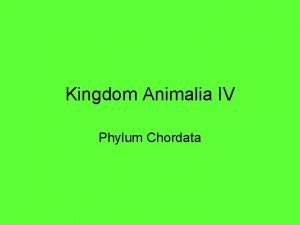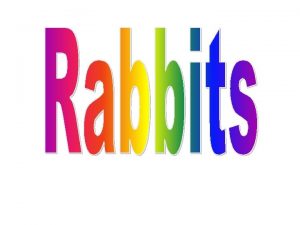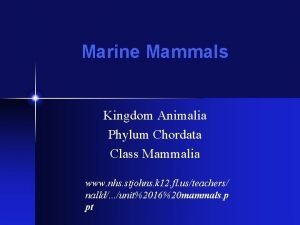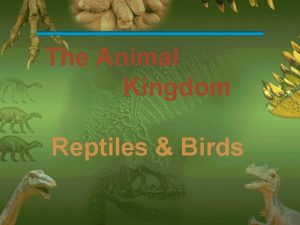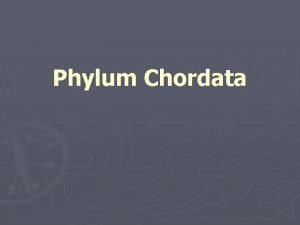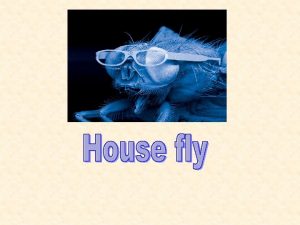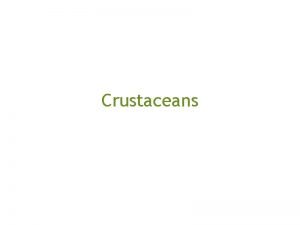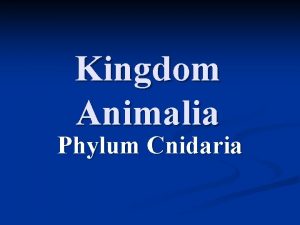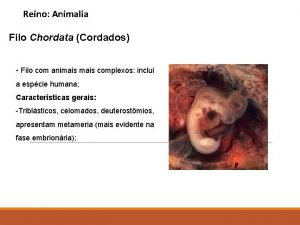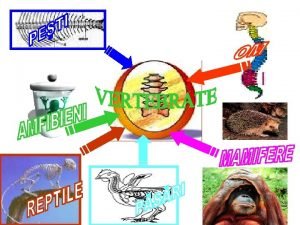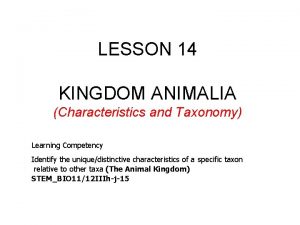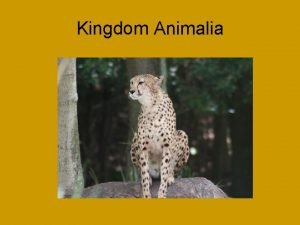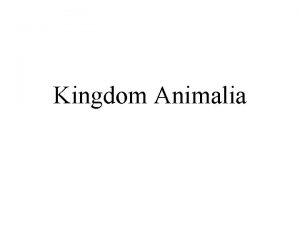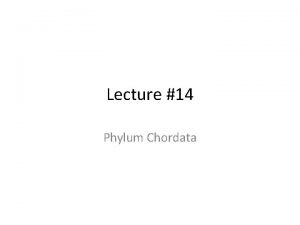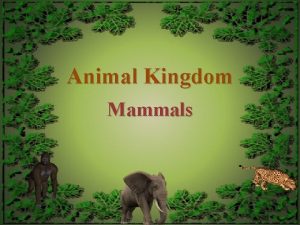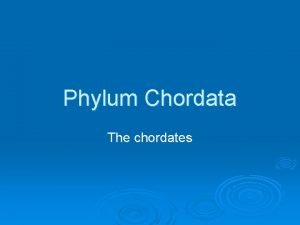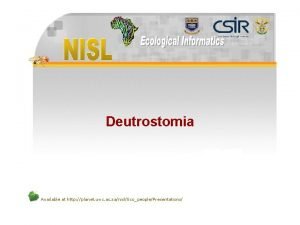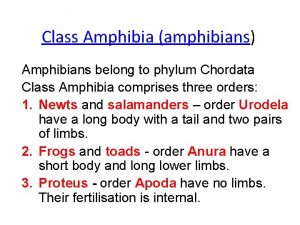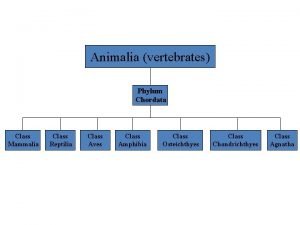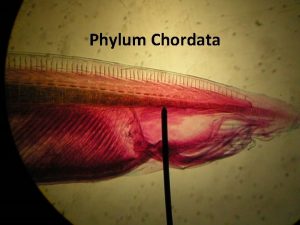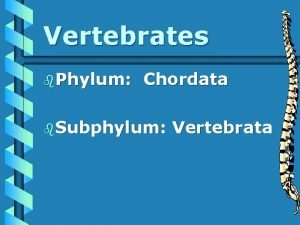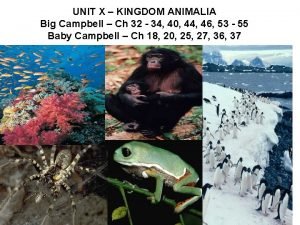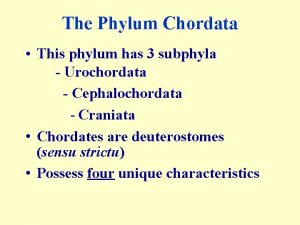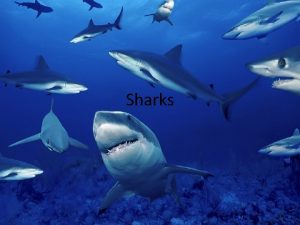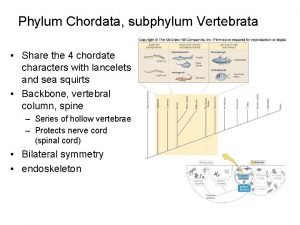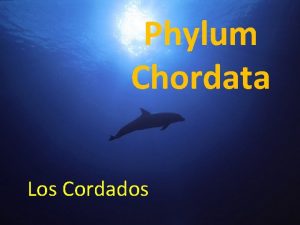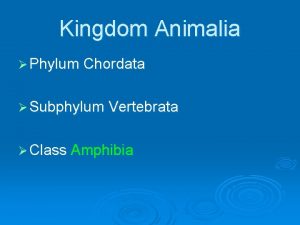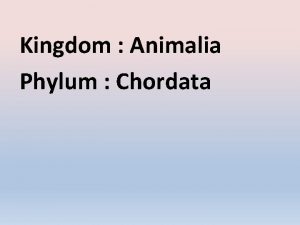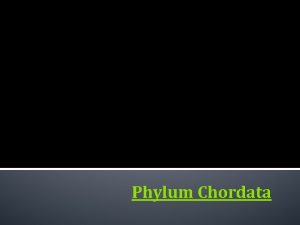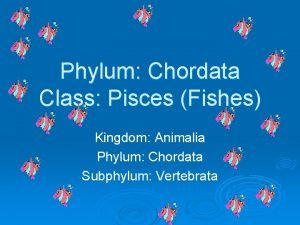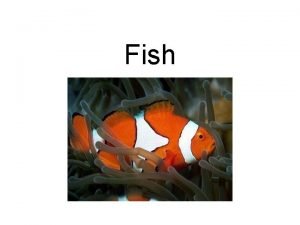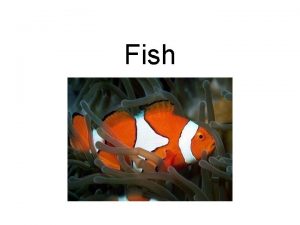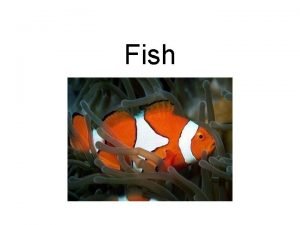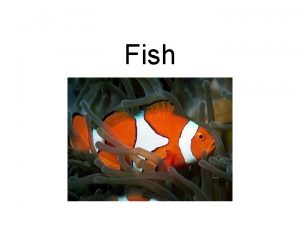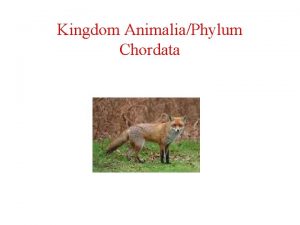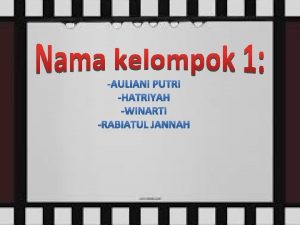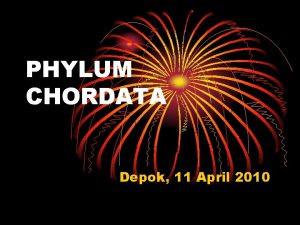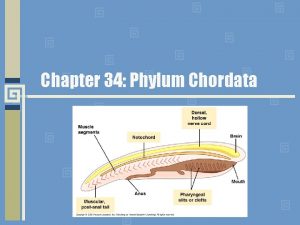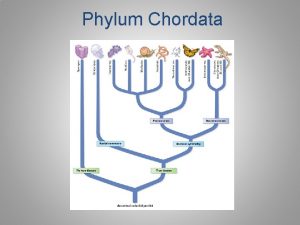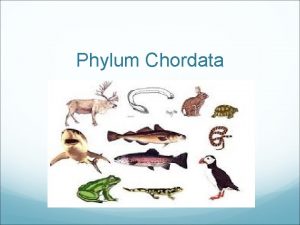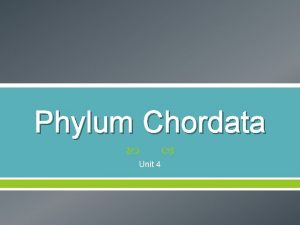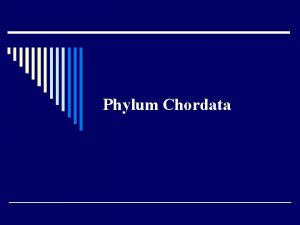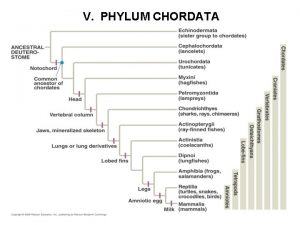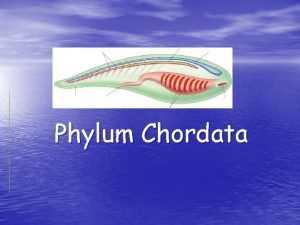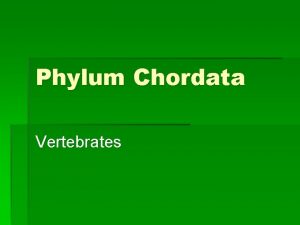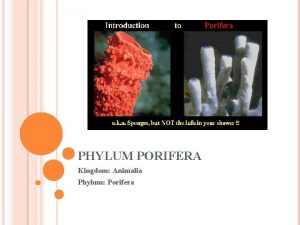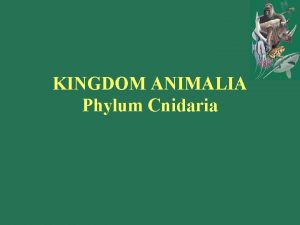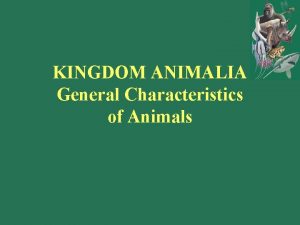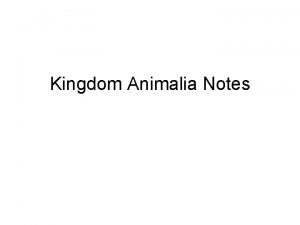Kingdom Animalia Phylum Chordata Kingdom Animalia General Characteristics




























- Slides: 28

Kingdom Animalia Phylum Chordata

Kingdom Animalia: General Characteristics • • • All multicellular All eukaryotic cells All heterotrophic ingest food Carbohydrate reserve is glycogen Lack cell walls

• Have highly differentiated body cells organized into tissues/organ systems for specialized functions such as: - Digestion – Internal transport – Gas exchange – Movement – Coordination – Excretion – Reproduction

• Reproduction is usually SEXUAL • Flagellated sperm fertilizes non-motile, larger eggs • DIPLOID stage dominates life cycle • Zygote undergoes series of mitotic divisions called CLEAVAGE, which produces a BLASTULA in most animals • GASTRULATION occurs after blastula is formed (embryonic forms of adult body tissues formed during it) • Development usually direct to maturation


Zygotic Cleavage


• Found in SW, FW, and terrestrial habitats Each of these habitats present special problems/challenges to the animals living there • 11 – 35 Phyla total (Kingdom Animalia) Invertebrates = 95% Vertebrates = 5% >1 million species

Symmetry Types • Asymmetrical • No definite “head/tail” end, no left/right sides. • Amoeba proteus

Spherical • “Round” No L/R, H/T Yeast cell

Radial • Show polarity (H/T), but no L/R sides

Bilateral • Definite head/tail ends AND left/right sides. One side is usually a “mirror image” of the other side

Anatomical Directions • • • Dorsal: top Ventral: bottom (belly) Anterior: front (head) end Posterior: back (tail) end Lateral: side surfaces


Kingdom Animalia Phylum Chordata • • • Fish Amphibians Reptiles Bird Mammals

Vertebrate evolution was from water to land!

Ontogeny recapitulates phylogeny!

Chordate General Characteristics • Endoskeleton of bone or cartilage; jointed and flexible. Consists of: Vertebral Column (backbone): replaced notochord. Surrounds and protects dorsal nerve cord. Cranium encloses brain. Vertebral column + Cranium = Axial Skeleton

Girdles • Groups of bones that connect limbs to axial skeleton • Pectoral Girdle: connect arms, forearms to axial skeleton

• Pelvic Girdle: connect legs and forelegs to axial skeleton

• Limbs: Usually paired. Legs, wings, flippers…. Girdles + Limbs = Appendicular Skeleton


2 Major Body Regions = Head & Trunk Head contains brain & sense organs …. . Cephalization

Specialized Vertebrate Body Systems • Integumentary Outer body covering. Protection & temperature regulation. • Skeletal Bones, cartilage. Protection, support, anchor for muscle tissue.

• Muscular Provides body movement. Forms organ walls. • Digestive Physically and chemically breaks food down into usable liquid nutrients • Excretory Processes, then rids body of various wastes (solid, liquid, gaseous)

• Respiratory Gas exchange. Gets O 2 to all cells, carries CO 2 from them. • Circulatory “Internal transport. ” Ventral heart. Arteries, Veins, Capillaries. Closed system. Blood contains RBCs with hemoglobin. • Immune Detects & destroys invaders of the body.

• Endocrine Glands. Produce & secrete hormones that regulate body processes. • Nervous Sensory perception & voluntary movement • Reproductive Produces gametes though meiosis

Vertebrate Lines of Development • The movement to land caused many changes. What changes had to occur due to the new demands of life on land? Gills to lungs Stronger bones & muscles Reinforced joints Reproduction… why? ? ?
 What are chordates
What are chordates Family leporidae kingdom
Family leporidae kingdom Kingdom animalia phylum chordata
Kingdom animalia phylum chordata Animal kingdom phylum chordata
Animal kingdom phylum chordata Chordata caracteristicas
Chordata caracteristicas Kingdom: animalia phylum: arthropoda class: insecta
Kingdom: animalia phylum: arthropoda class: insecta Kingdom animalia phylum arthropoda
Kingdom animalia phylum arthropoda Diagram of phylum cnidaria
Diagram of phylum cnidaria Cnidaria characteristics
Cnidaria characteristics Cordados classificação
Cordados classificação Subincrengatura vertebrata
Subincrengatura vertebrata Brittle stars phylum
Brittle stars phylum Multicellular characteristics
Multicellular characteristics Animalia kingdom characteristics
Animalia kingdom characteristics Urochordata
Urochordata Mesonychids
Mesonychids Phylum del cocodrilo
Phylum del cocodrilo Characteristics of bony fish
Characteristics of bony fish Phylum chordata class amphibia
Phylum chordata class amphibia Aves taxonomy
Aves taxonomy Phylum chordata class reptilia
Phylum chordata class reptilia Chordata
Chordata Subphylum vertebrata characteristics
Subphylum vertebrata characteristics Phylum chordata
Phylum chordata Chordata subphyla
Chordata subphyla Exocoetus classification
Exocoetus classification Digestive system of chordata
Digestive system of chordata Pez sanate
Pez sanate Phylum
Phylum
